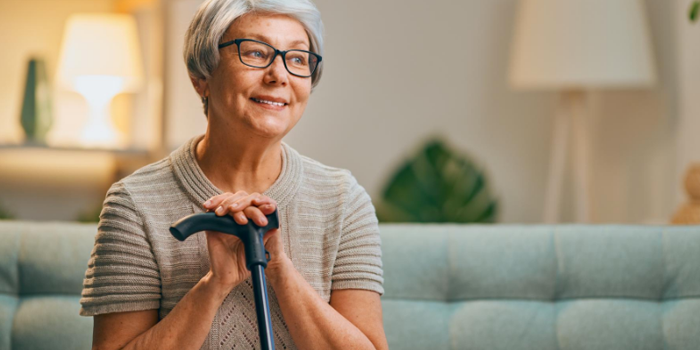No products in the cart.
Uncategorized
7 Tips on Home Safety for Older Adults
As we age, most of us prefer to stay in our own homes for as long as possible. There are many benefits for older adults that are associated with staying at home and maintaining independence. If you, or an older relative is starting to experience age-related changes that are impacting daily life, it is important to ensure the home is safe.
The following are 7 home safety tips that you can follow to ensure a home is appropriate for an older adult to reside in.
1. Remove Fall Hazards
Falls are the primary cause of injury for seniors. As such, it is important to ensure the home is fall-safe. The following are some of the ways to do this:
- Create an open environment in the home with limited clutter.
- Remove rugs that do not grip the floor well.
- Limit the amount of furniture in the home by discarding or donating old pieces.
- Ensure there are no trip hazards such as extension cords stretched across the floor.
2. Remove Fire Hazards
It is extremely important that an older adult’s home is free from fire hazards:
- Regularly change the batteries in smoke and carbon monoxide detectors.
- Ensure frayed or damaged electrical cords are replaced. Also, limit the number of cords that are plugged into extension cords.
- Remove candles from the home. If left burning and unattended, candles can start a fire.
- Do not have candles in the home.
3. Evaluate the Lighting
As we age, our eyes change, and it can be difficult for older adults to see in areas that are not well lit. Test the lighting in each room of an older adult’s home by standing in a corner of a room and looking out across the room. Ensure you can see a clear path from one end of the room to the other. If not, it may be necessary to add more lights.
- Install new light fixtures in areas of the house that are not well lit.
- Ensure all light bulbs are working.
- Consider using motion detection lighting so that the older adult doesn’t need to find switches.
4. Consider How to Deal with Stairs
Many older adults struggle to get up and down stairs. If the current home has stairs inside or outside, it may be necessary to look into ways to make them manageable.
- Stair lifts can be made to order to fit inside or outside a home. They can be custom fitted inside or outside the senior’s home. They also operate on a battery system, which means that they will continue to work in the event of a power outage.
- Ensure stair railings are fitted properly. If the railing is not secure, tighten the nuts and bolts or replace it.
- It may be difficult for a senior with partial vision to differentiate between steps, so it’s important to try to make them stand out. Painting stairs a contrasting colour or adding a different-coloured piece of duct tape on the top of each stair to make them easier to spot can be an effective way to do this.
- Ensure any indoor stairs are cleared at all times. If you live in a climate that is affected by severe weather conditions, in the winter, ensure outdoor stairs are clear of ice and snow. Or make sure that wet, fallen leaves are not left on the steps, avoiding a slip.
5. Discuss Home Safety
Older adults can be targeted by criminals, so it’s important speak to them about common sense safety measures. Here are some things to discuss:
- Installing a peephole in the front door so that they can see who is there before answering.
- Ensuring they do not open the door to people they do not know if they are home alone.
- Always keeping doors and windows locked.
- Ensuring they are aware of telephone scams or people offering maintenance such as roof repair, and that they do not agree to any telephone offers or offers to take them to the bank to withdraw maintenance to pay for supposed repairs.
6. Have Emergency Numbers at Hand
Ensure your older adult owns a mobile phone or home phone that they can easily operate. It’s important that they know how to recognise incoming callers and can identify between those from known people and strangers. In addition, ensure they have the numbers for, and are able to call the following:
- Emergency services (000)
- Emergency contacts (family members and friends)
- Any professional caregivers that they use
- Any healthcare providers
Technology can sometimes be difficult for older people to use but it offers some benefits. Consider using a mobile phone that responds to voice prompts could be helpful for come people. You may need to show them several times how to use it and make sure you take plenty of time to practice it.
7. Check in with Them
Perhaps the most important and effective aspect of home safety for seniors is to have someone checking in on them. Family, friends, neighbours and professional caregivers can all play a part in making sure they are safe.
With a bit of assistance from loved ones, older adults can enjoy life at home long into their later years. For more information on this article, or the other services that we provide, don’t hesitate to get in touch with Brain Sparks.


